The Crow (1994) by James O’Barr
Two years after Kevin Eastman bought Kitchen Sink (well, acquired a majority stake), and then pumped in an additional $2M, Kitchen Sink was broke and had to raise more money. It was sold to Ocean Capital Operations, who seemed to want the company to mine for more movie rights — the company had already spawned Cadillacs and Dinosaurs and The Crow, so there must be more, right? RIGHT?!
But the weird thing about all of this is that Kitchen Sink didn’t have any rights to anything they’d published — Denis Kitchen was a staunch supporter of creators’ rights, and the creators owned everything, so buying Kitchen Sink doesn’t really get you much, except some specific deals Kitchen had with specific creators (as a sort of agent, apparently — he served as a firewall between Hollywood and Mark Schultz, it seems like).
But Kitchen Sink Press did have one thing that actually sold copies: The Crow graphic novel, which went back to the presses more than a dozen times over a few years.
But I bought the Caliber issues (which were the source for the graphic novel) back when they were originally published, and I’ve forgotten to buy the Kitchen Sink collection! *gasp* Sorry! So let’s look at those instead.
*gasp* I’ve only got the second printing of this. I was slow on the uptake, I guess.
Anyway, this starts off with a nice, if oddly mouthless drawing of Ian Curtis, and then we get a quotation from Voltaire, and then we get a poem from Rimbaud.
What, no Baudelaire?
So we’re solidly in a territory designed to appeal to angsty thirteen-year-olds all over the world — O’Barr leans into this pretentious portentousness with no irony, with no sense of distance — he really commits, which is the appeal, I guess.
I’m a Joy Division fan myself, and plenty pretentious, but I really was too old (21) to properly enjoy this at the time. I just thought it was slightly risible, but I assumed O’Barr was, like, 18, so I just went with the flow.
But he was born in 1960, so he’s even older than me. However:
The Crow sat on a shelf for seven years, but at last he found a publisher with Gary Reed of Caliber Press.
I don’t know whether that means that he drew The Crow in 1982? Which would make the Joy Division/The Cure references more topical, and would make my guess at his age less wrong.
The book shifts between quite well-rendered pencil drawings (when there’s a flashback or a dream sequence) and er less well-rendered pen-and-ink drawings.
O’Barr is quite good at drawing moody faces, but when he draws entire figures, the proportions of the body parts often don’t match up — the heads are too big, or the arms stick out randomly from the torsos.
And he’s absolutely the worst at drawing action sequences.
The story is totally derivative: He witnesses his girlfriend being gang-raped, and he’s shot and left for dead (but makes a recovery (possibly supernaturally)), and goes after the rapists, and kills them off.
So why was this such a major, major success? I was sampling pretty much everything that Caliber was publishing at the time (because they’d done some good stuff), so I bought this not because I was making an effort to buy it, but automatically. But it was an resounding success, with Caliber having to go back into multiple printings pretty much immediately.
I can’t believe that there were that many people waiting for a comic book that has an avenging vigilante that quotes Joy Division lyrics. Is it just because it’s a “modern” take on Death Wish? That’s a popular genre, and O’Barr commits to it, while making it “deep” and stuff? Because as much as I make fun of this book, it does have a certain jennesequa. It’s got a proper mood.
Pick a head size… any head size…
Third printing!!! And more Joy Division lyrics.
How can you tell a bad guy is really bad? When he tortures and kills somebody with Downs.
Hey, gotta have some Cure lyrics in here, too…
I do like that “Next” box.
*rolls eyes*
The final Caliber issue is mostly dedicated to showing the rape and the murder(s).
And O’Barr goes way further than most popular culture depictions of rape (not shown here), so I guess he was prescient that way.
There were five issues planned, and Caliber solicited the fifth issue multiple times, but it was never published, which (reading O’Barr’s wikipedia page) looks like something of a pattern with O’Barr — he’s apparently announced a number of projects over the decades, and haven’t really delivered many of them. But he did finish this one storyline — Kevin Eastman’s Tundra took over the publication, and managed to squeeze the concluding chapter out of him, which led to the enormously successful graphic novel collection, and presumably also the movie.
But I’m slightly curious as to how the storyline ends, so I’ve now bought the collection from ebay, and when it arrives, I’ll natter on a bit about it here after this colon:
[TO BE CONTINUED]
I got a Kitchen Sink collected edition here now — it’s unclear what printing. Kitchen Sink was usually pretty scrupulous about stuff like that, so I’m guessing it’s a very late printing.
It’s very nicely printed, though.
I didn’t compare with the original comics, but it looks like the artwork hasn’t been edited. And in particular, the somewhat uneven lettering hasn’t been tweaked, which is something I’d assume they would have wanted to do. But it sold hundreds of thousands of copies, so I guess that wasn’t a problem anyway.
But the “final issue” — Death — is what I got this for, and it’s a pretty hefty ending.
The pencilled bits are reproduced wonderfully here.
About goodly portion of the issue is taken up with the avenging guy gearing up like in Infinite Schwarzenegger:
But of course Schwarzenegger does less stretching and interpretive ballet, which is what makes The Crow so deep.
The rest is the revenge: The guy kills all of the villains. He goes easy on the least evil of them, but the rest get killified until they are thoroughly dead.
And then there’s a long section of illustrations, poetry, covers and stuff.
The package is really well put together.
The Comics Journal #159, page 15:
O’Barrcreated The Crow in 1981. The five-
part series was described by Entertainment
Week/v as a reaction to the death of the artist’s
girlfriend in a car accident, although they gave
no source for this information. O’Barr himself
is quoted in Amazing Heroes #157 as saying the
story was based on the murder Of a “young cou-
ple for a $30 engagement ring. ” The dedica-
tion to The Crow suggests another possible
inspiration: the 1980 suicide of Ian Curtis.
former lead singer of the British rock band Joy
Division. Attempts by The Conlics Journal to
reach O’Barr for clarification regarding the the
source of his inspiration of the character were
unsuccessful.[…]
In spite Of The Crow’s violence, weaponry,
and vendetta theme. O’Barr has repeatedly
stressed in interviews that The Crow transcends
the action-adventure genre. More than once, he
touted the last issue’s “enormous body count”
as an outstanding feature, yet he feared that The
Cron’ could • •degeperare into a Punisher-type
book. • • if he had continued beyond that point.
To O’Barr. the distinction comes in the motiva-
lion Of the character —
•the personal tragedy
of Shelly’s brutal murder. ”
It was this distinction that led O’Barr to
remark that the Crow adaptation should not
“degenerate into a Wish-type film,” and
it was a telling one to Brandon Lee, who saw
Eric as “a plum role” — One which could lead
him away from the unsophisticated action-
adventure films which had previously solicited
his talents.
Uh yeah… degenerating… into a Death Wish type film.
James O’Barr’s vision for The Crow is
deep, dark, sorrowful and violent.. .a
story he describes as one of retribution.
“It’s based on a true incident that
happened in 1979,” says O’Barr, “when
a young couple was killed for a $30
engagement ring.” In O’Barr’s version,
however, the young man survives the
brutal attack, and seeks retribution for
the crime.
This five-part mini-series, which
O’Barr originally wrote as a complete
book, is broken down into five chapters:
“Pain,” “Fear,” “Irony,” “Despair,” and
“Death.” “The first three books contain
flashbacks that hint at what has
happened,” O’Barr says, “and the fourth
book explains everything.” The Crow
appears throughout the series as a
symbol, and its meaning is revealed as
the story progresses.
Although the series is extremely
violent, O’Barr refrains from depicting
excessive gore. Sexual scenes and pro-
fanity are also kept to a minimum.
O’Barr feels it is more of a challenge to
keep the readers hooked on the story
rathen than on gratuitous use of profanity
or gore.
The Cmw will make a special preview
appearance in High Caliber #1, in an
eight-page story entitled “Inertia.” The
five-part mini-series will first appear in
February 1989.
O’Barr will be rendering his gloomy
tale of The Crow in the haunted tones
of black-and-white, but the covers will
be in full color, painted in watercolors
or acrylic. The writer/artist promises to
depict events in The Crow “in a very
realistic fashion.”
Again, looking at O’Barr’s wikipedia page, it looks like O’Barr has done quite a few covers and illustrations after finishing The Crow, but it looks like he’s never actually drawn a comic book ever again? I may well be wrong, though. On the other hand, why should he? He’s presumably got a lot of money from the movie adaptations.
This is the one hundred and seventy-fourth post in the Entire Kitchen Sink blog series.


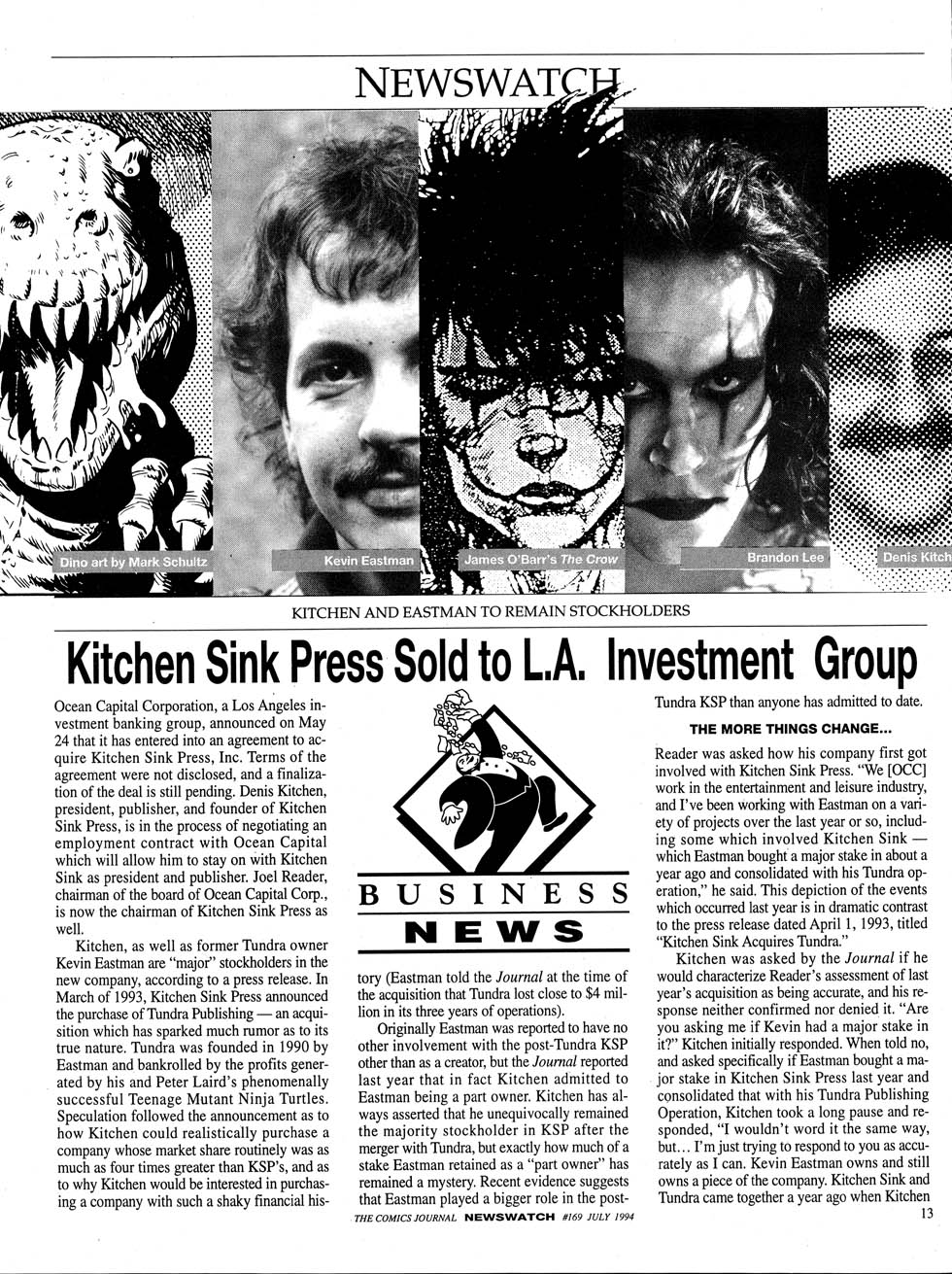

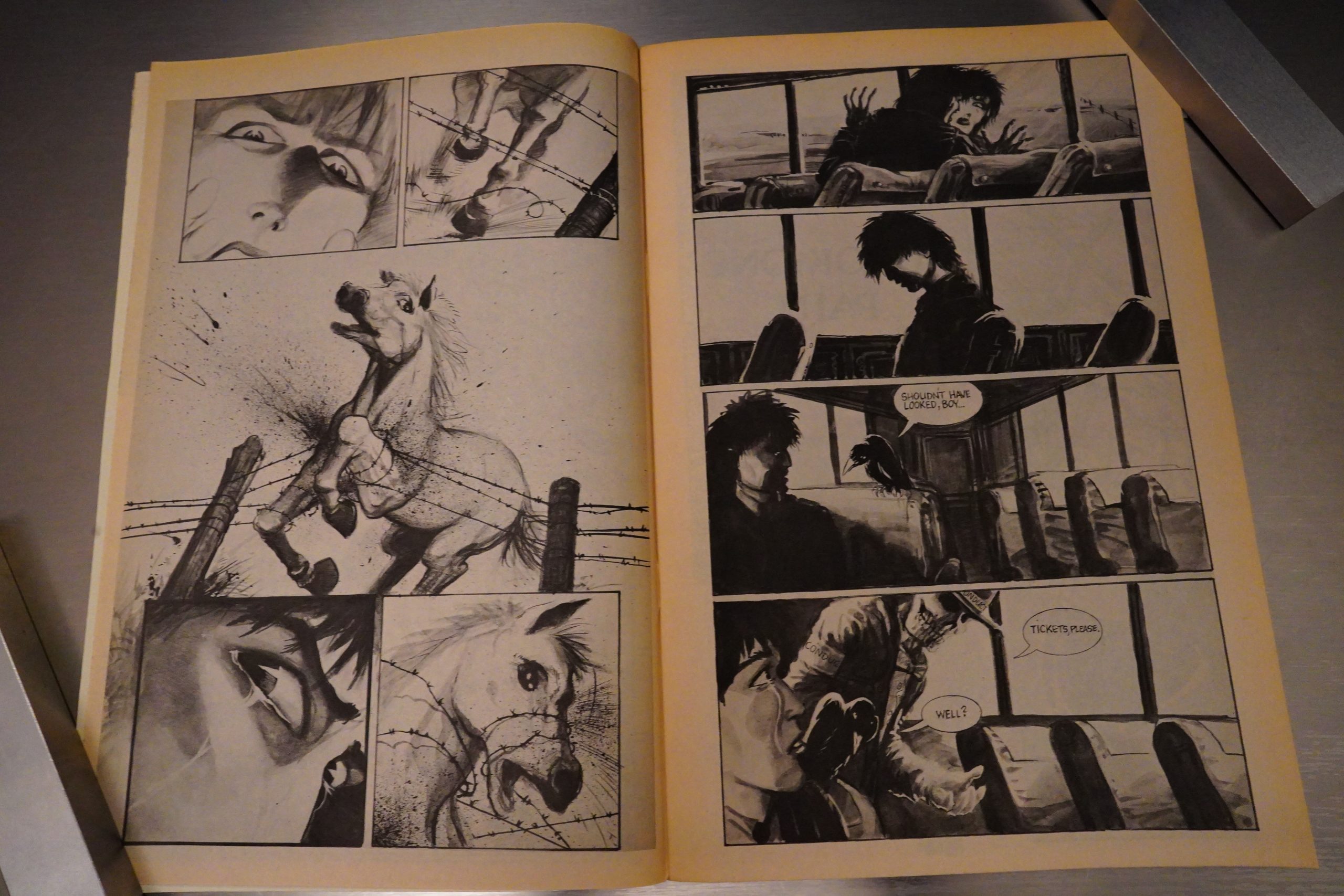

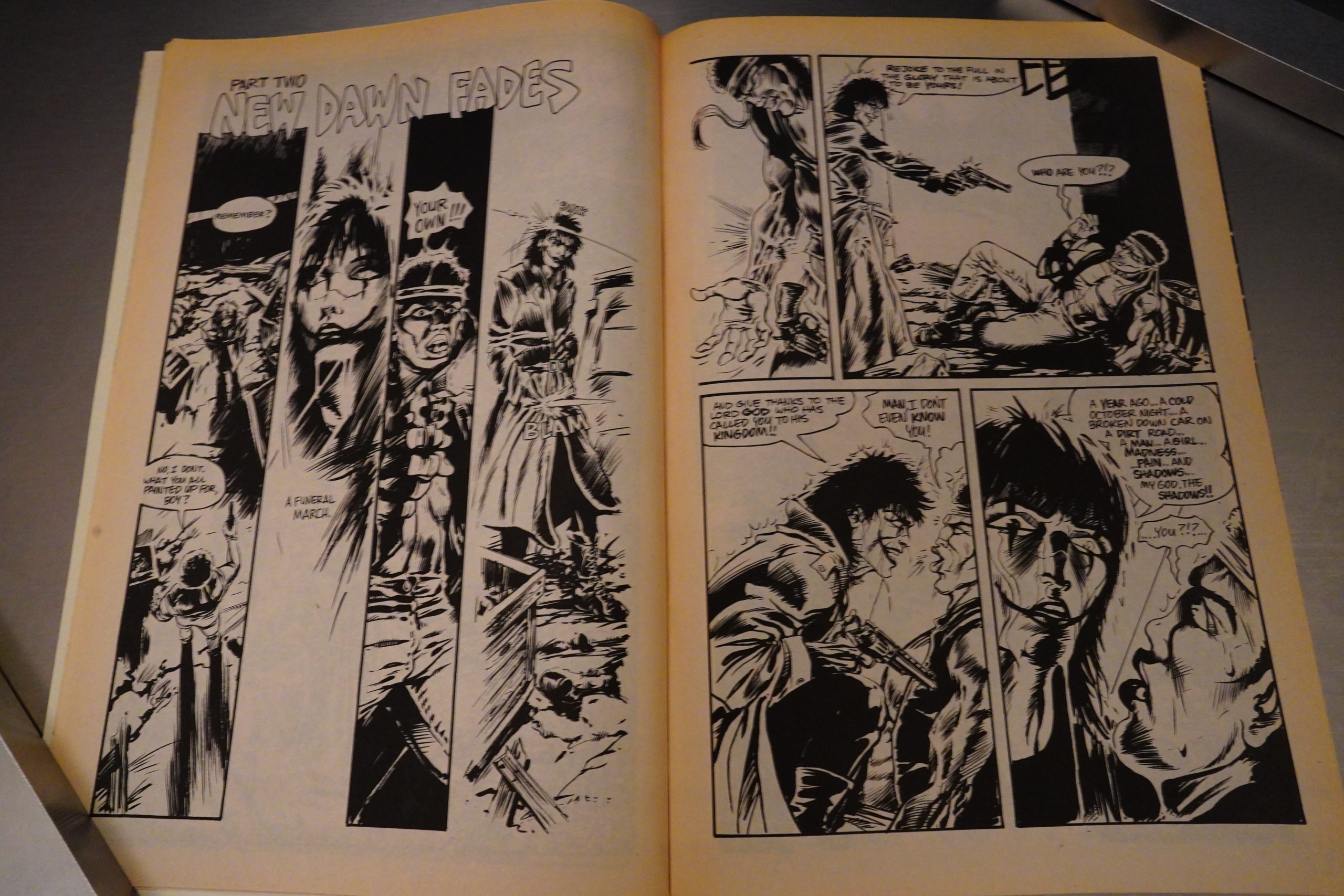
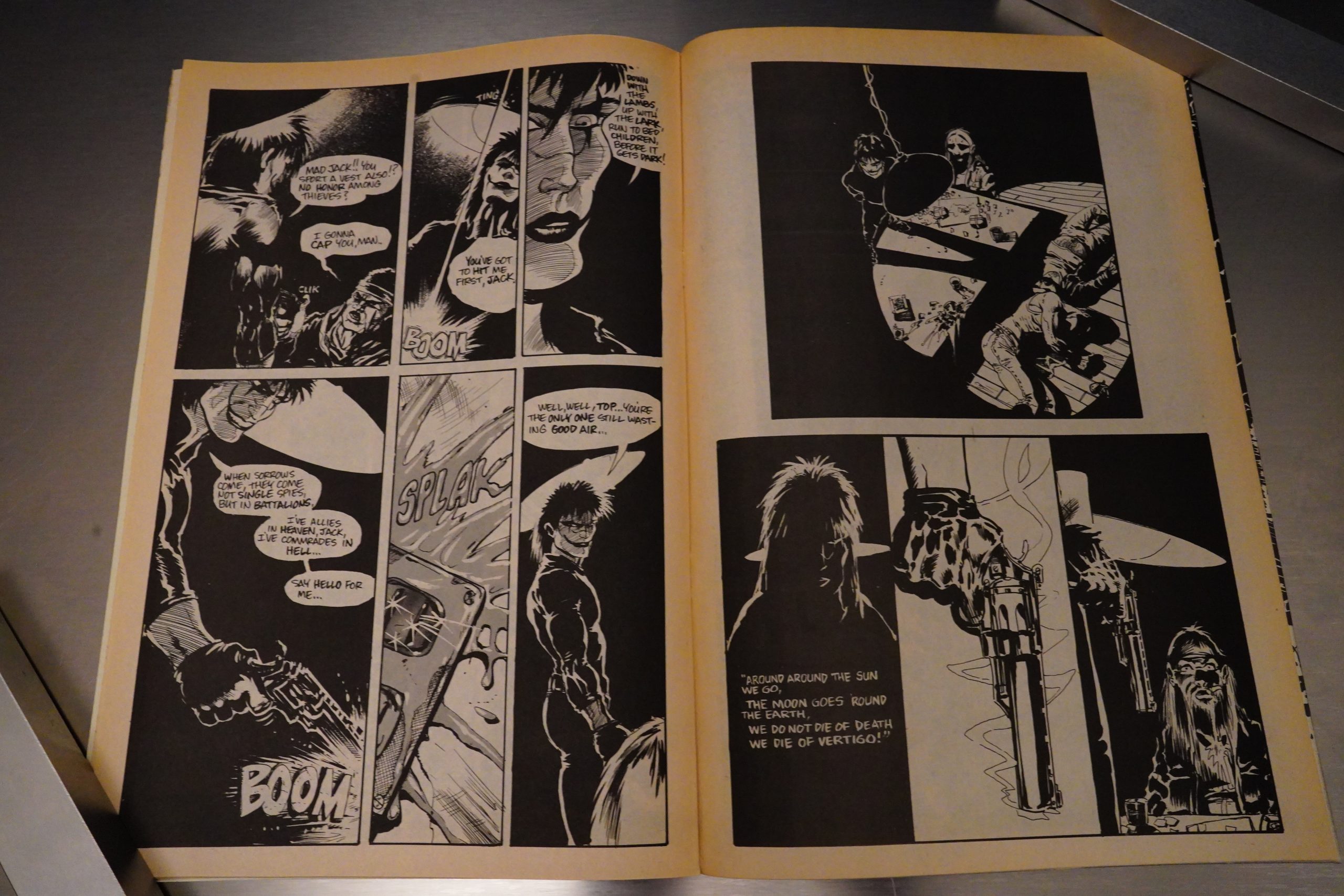
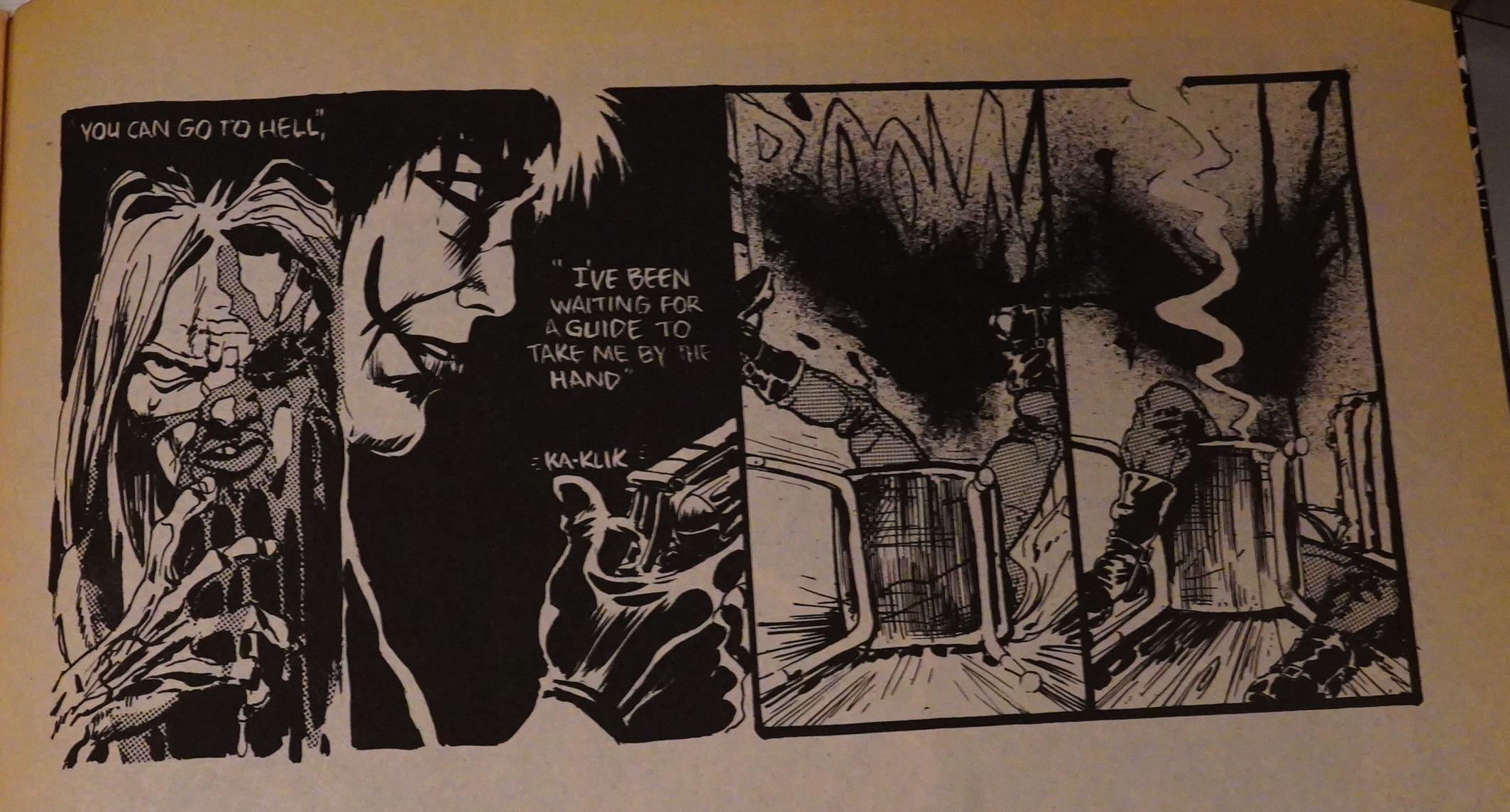

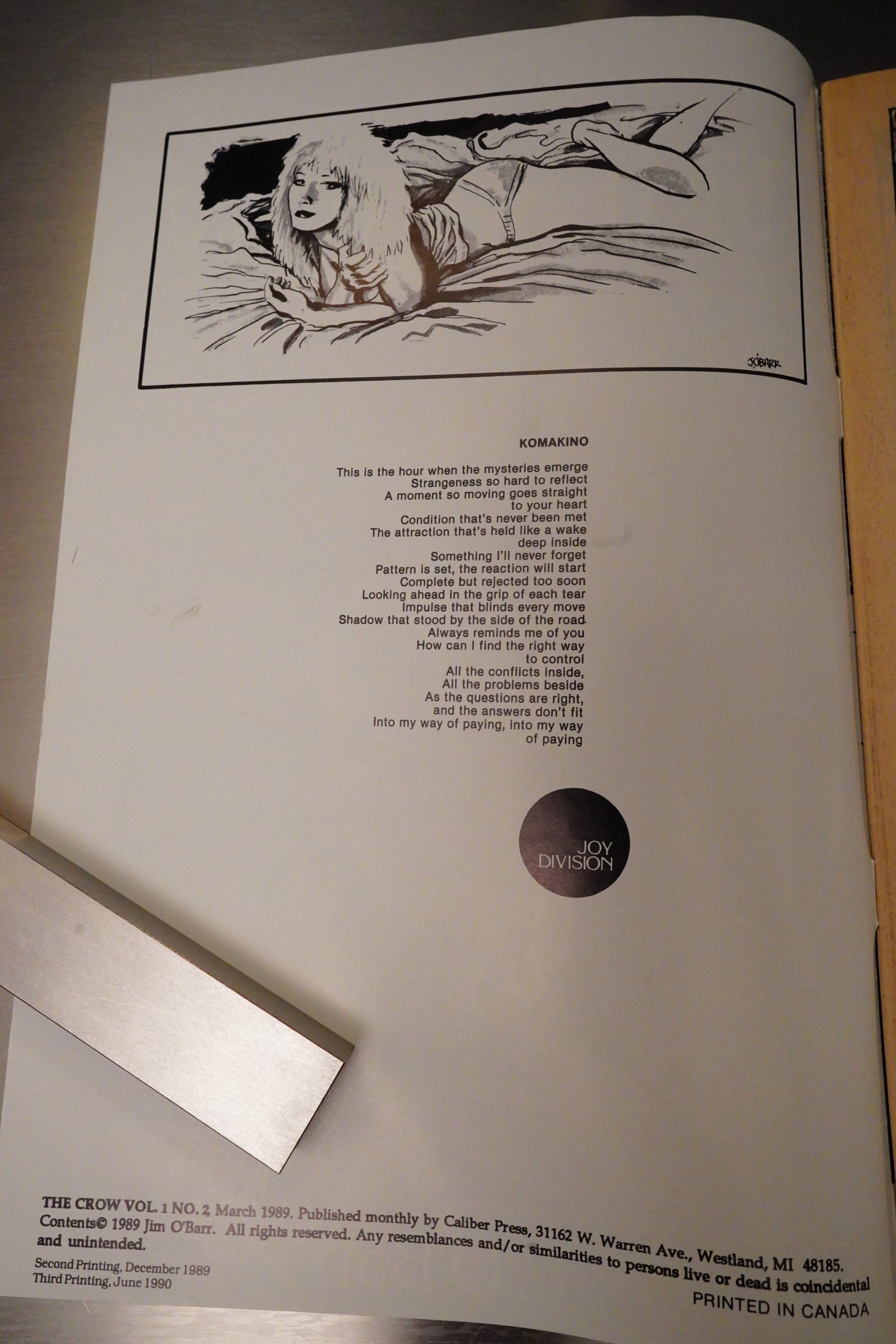
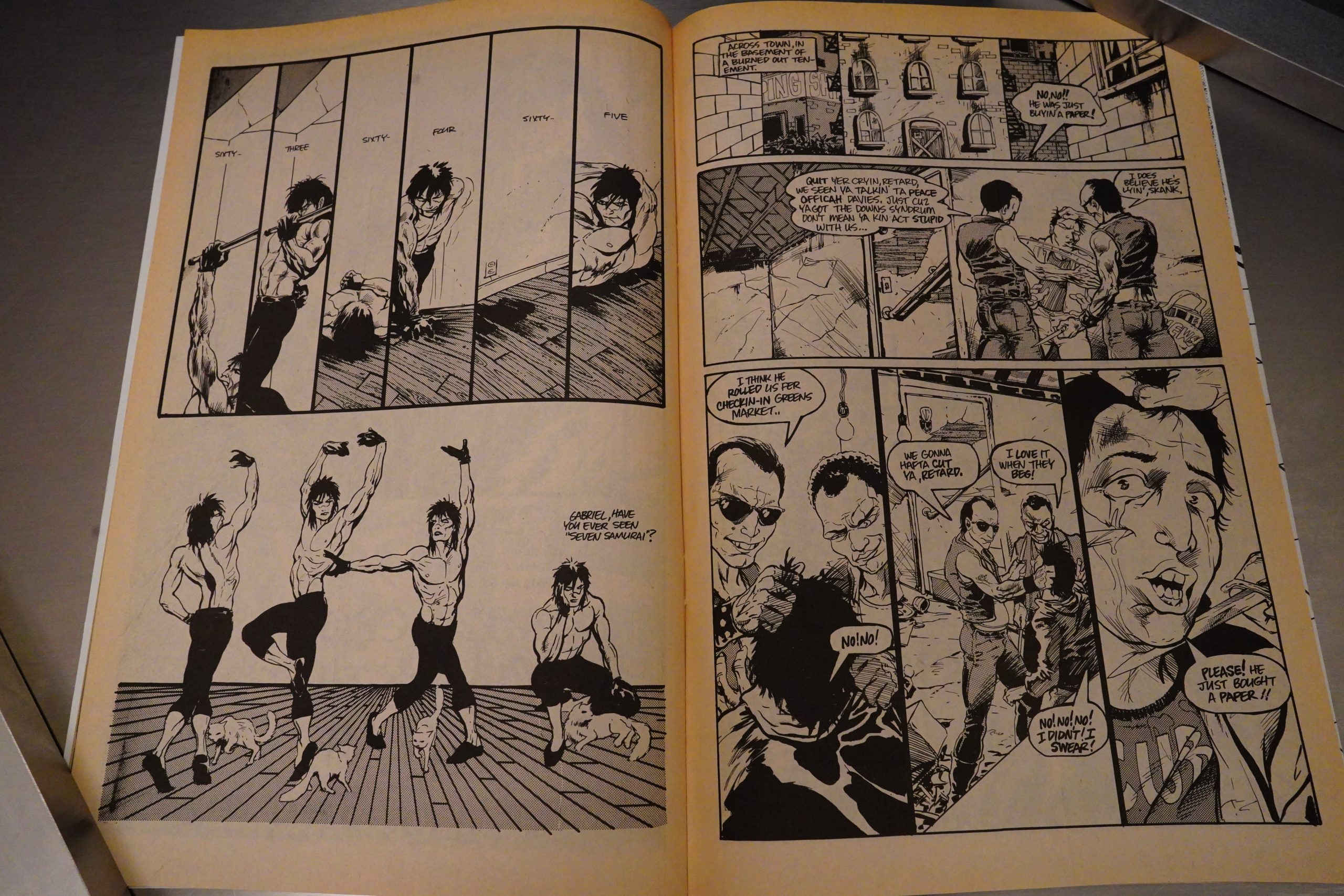
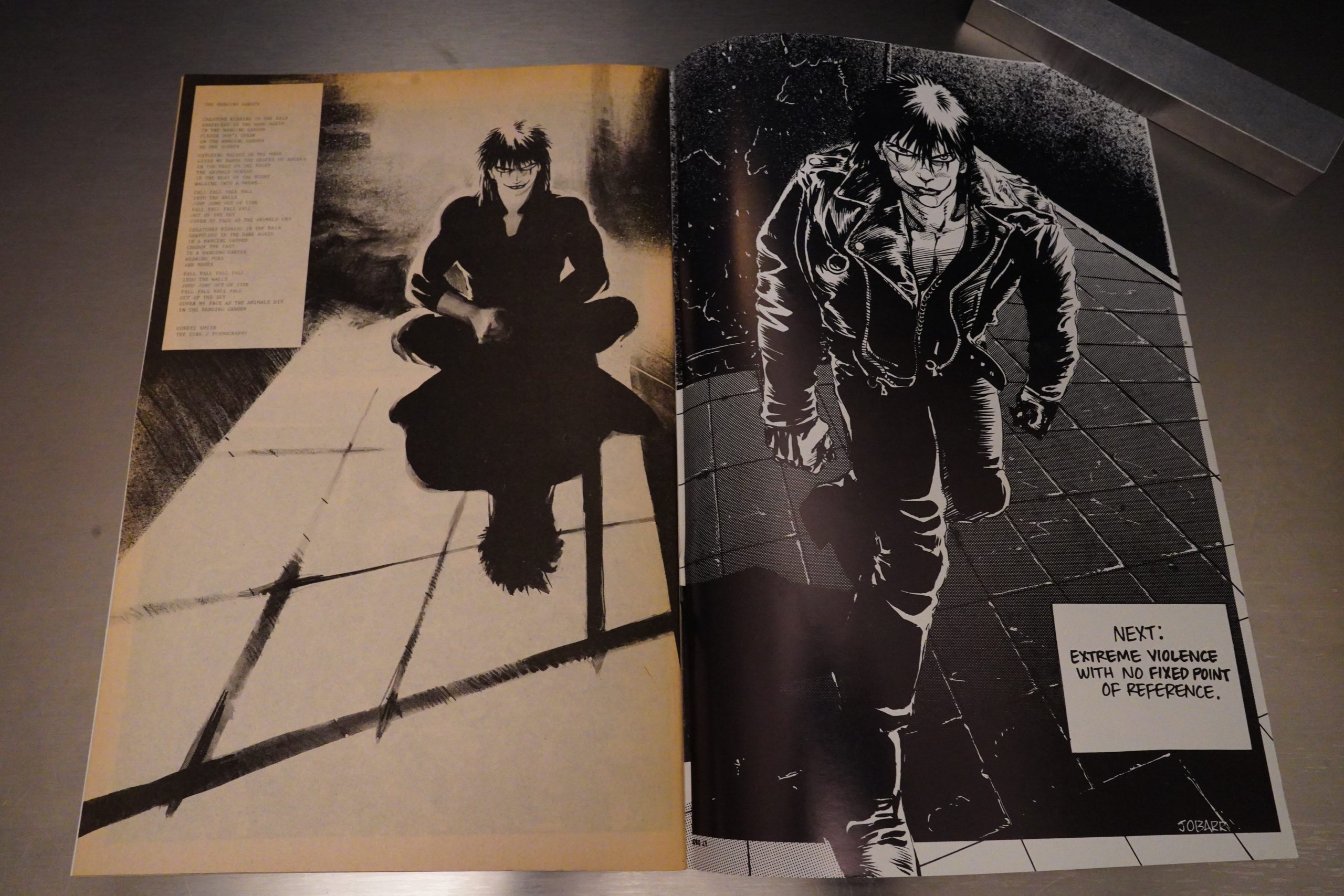
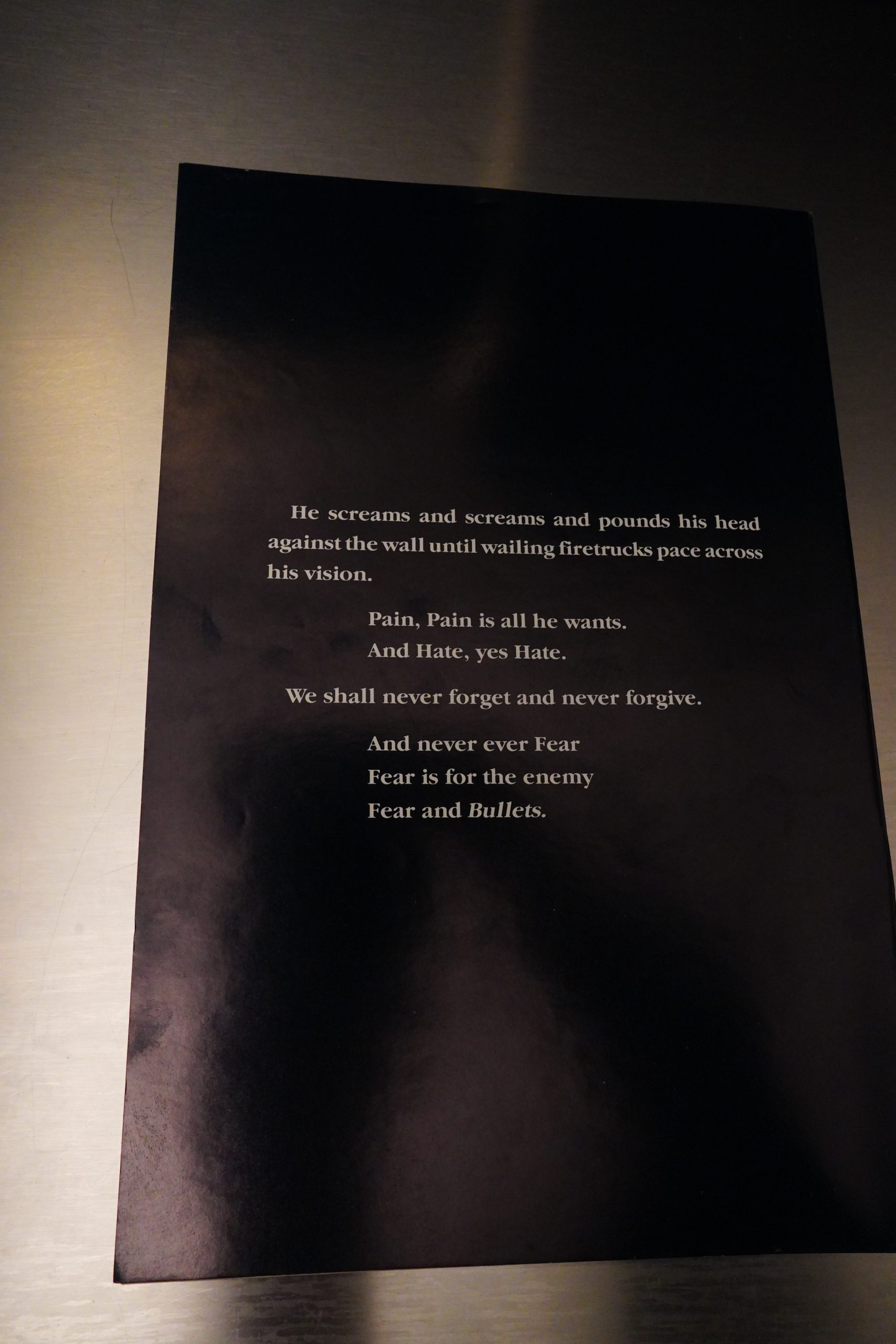
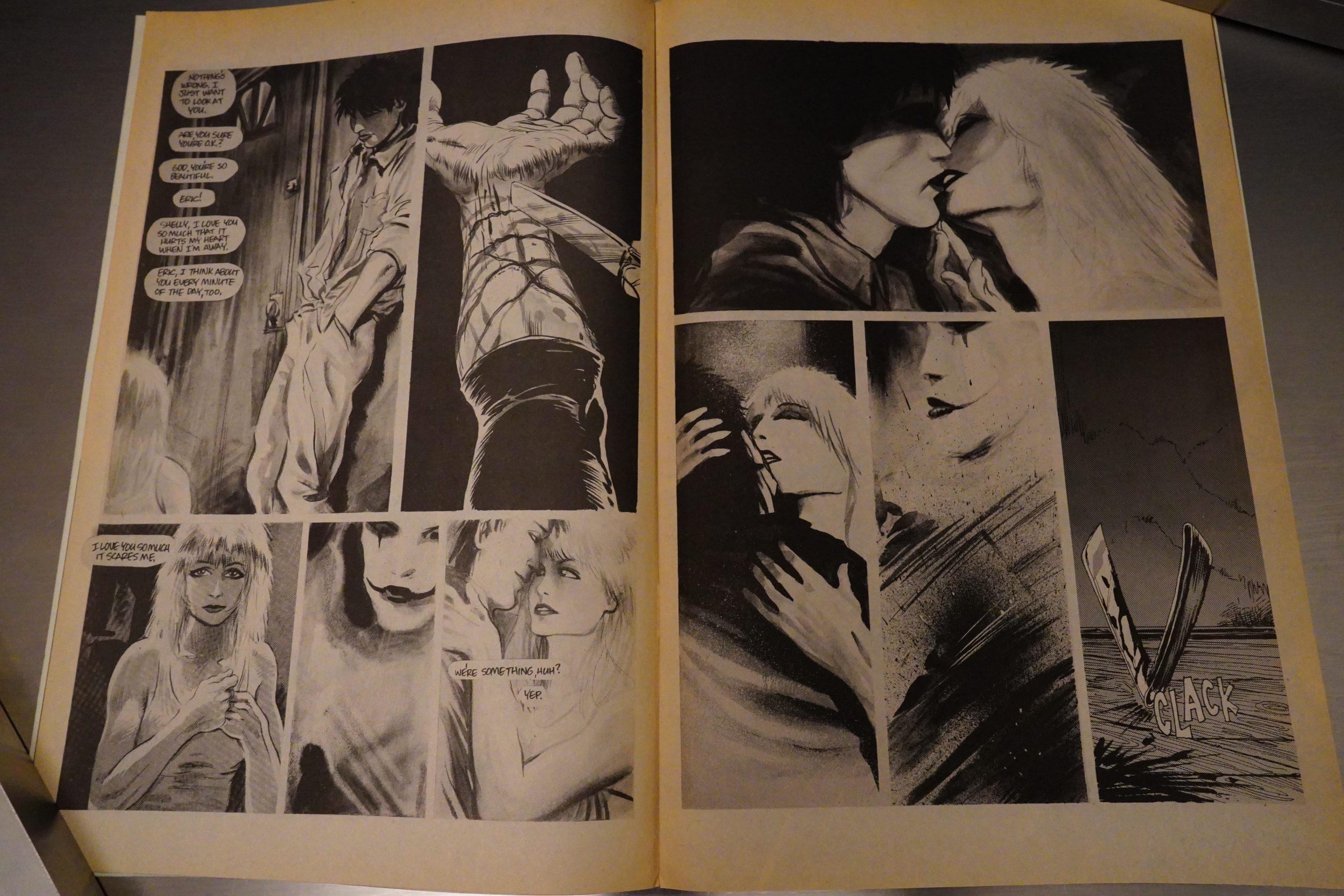
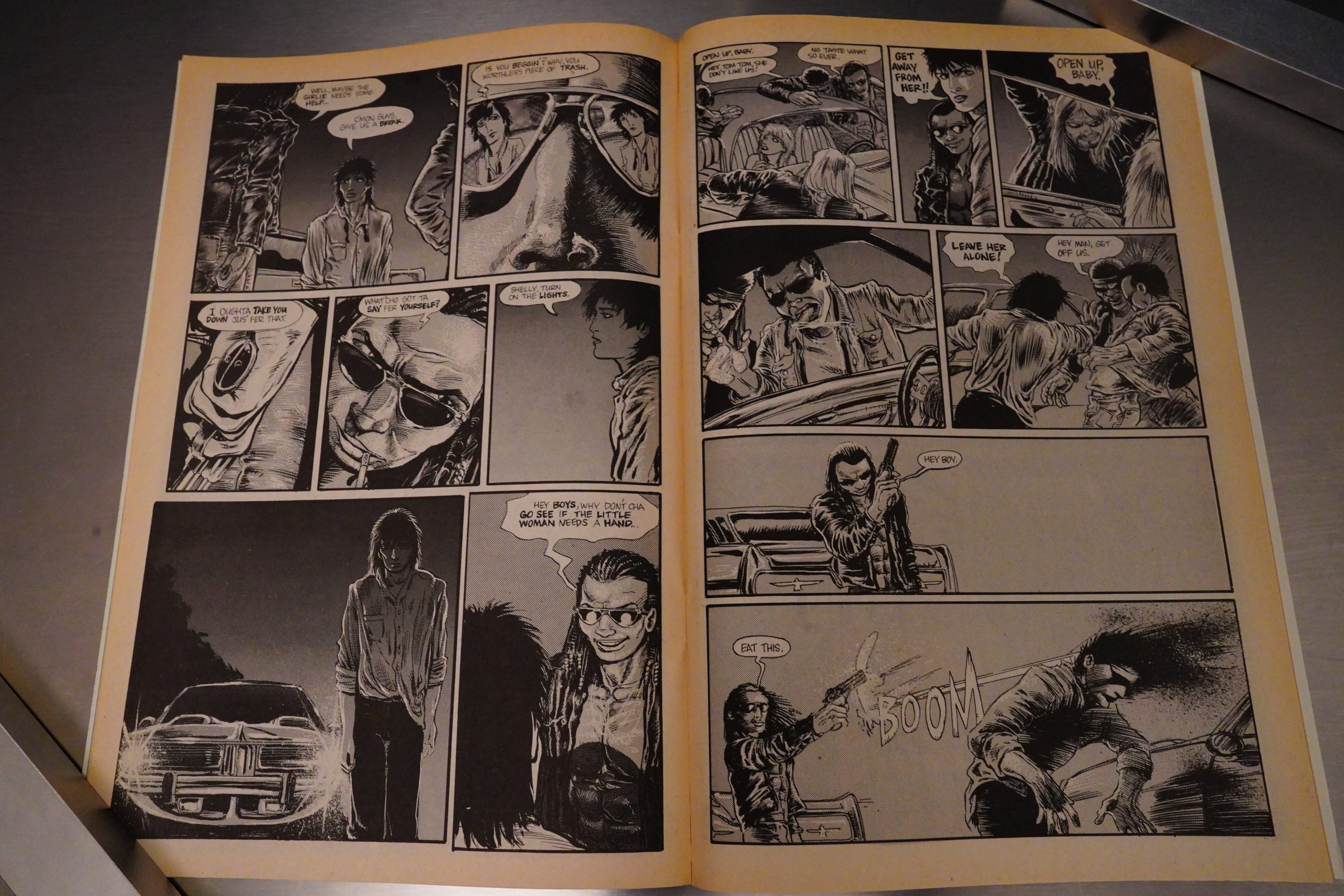

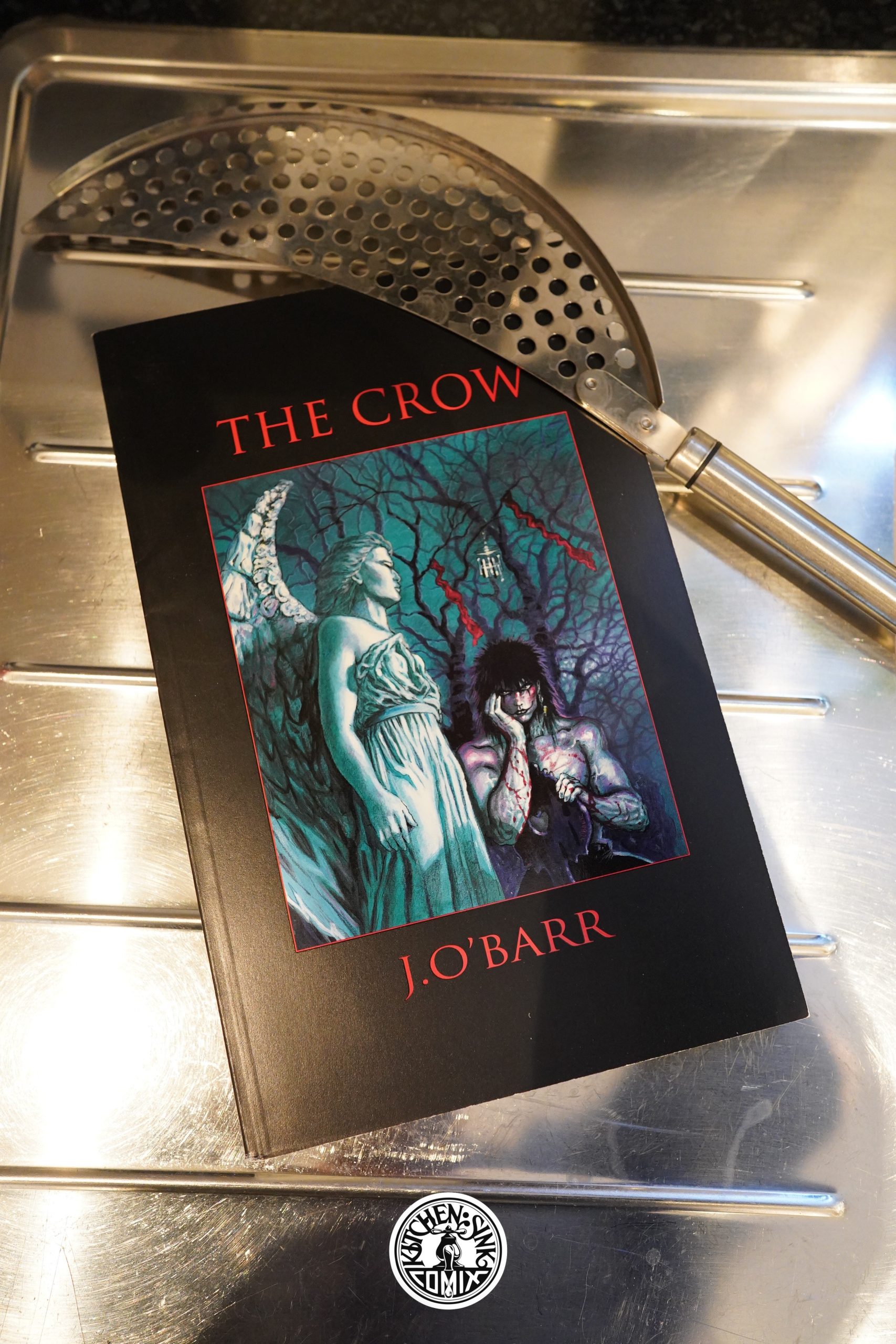
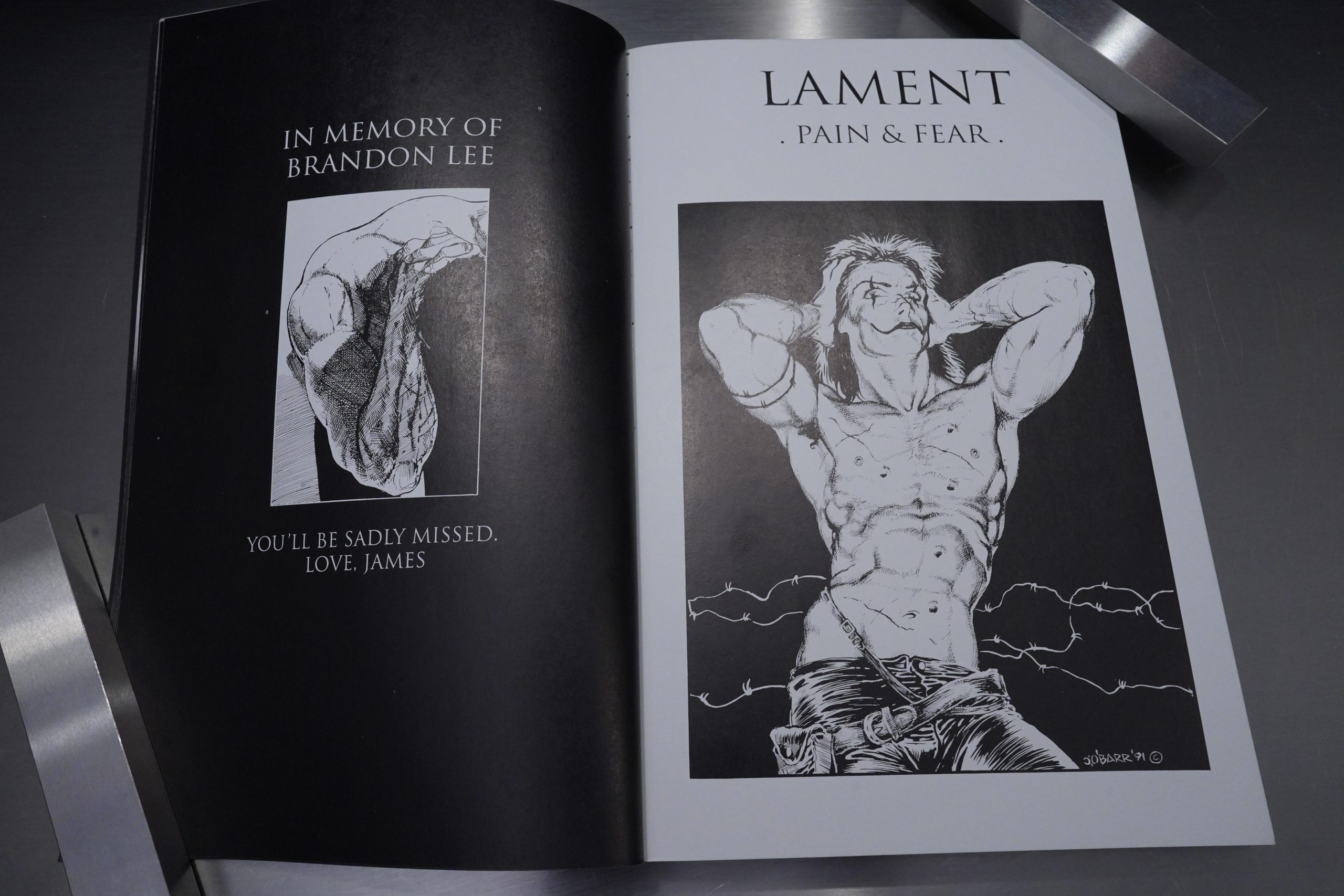
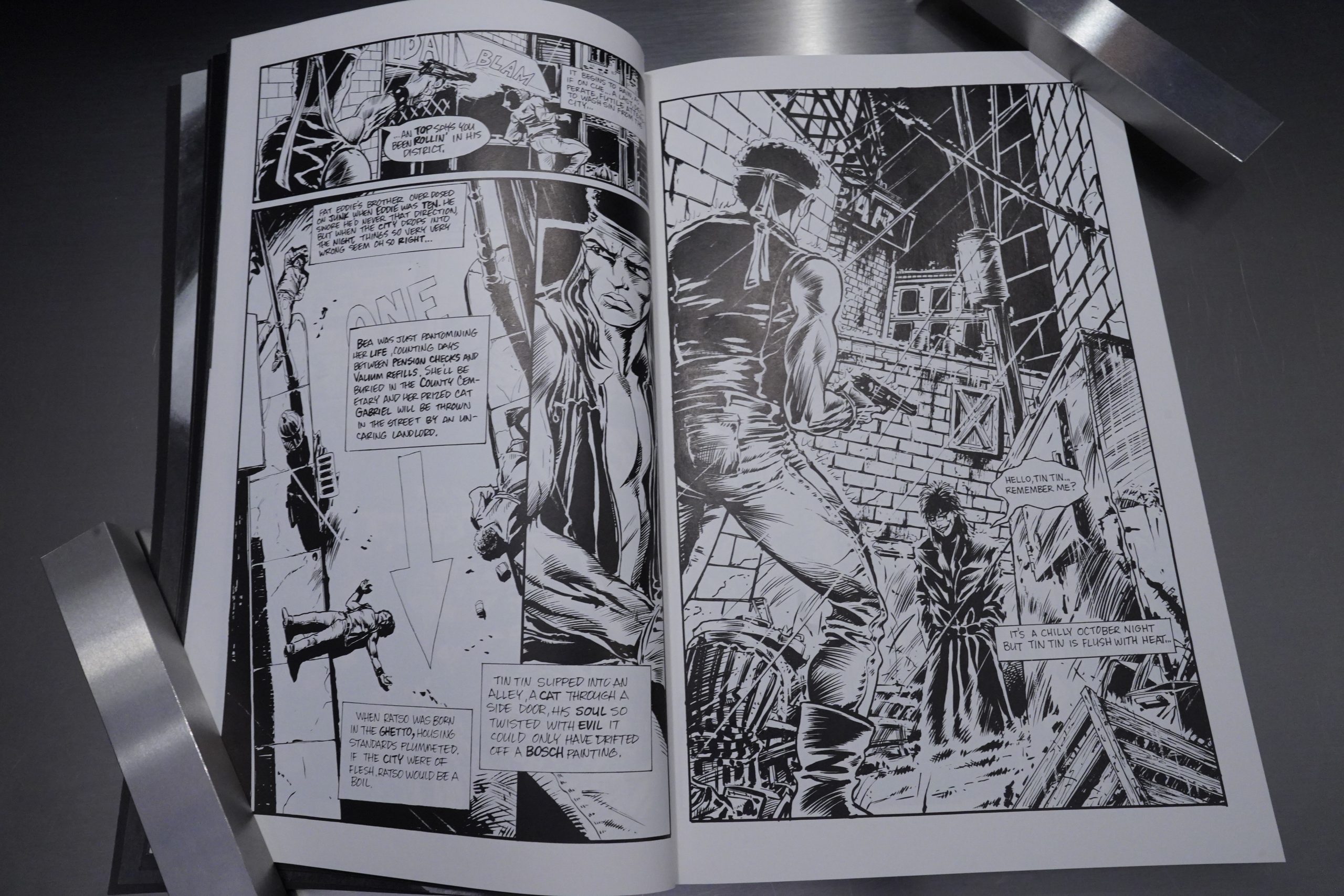

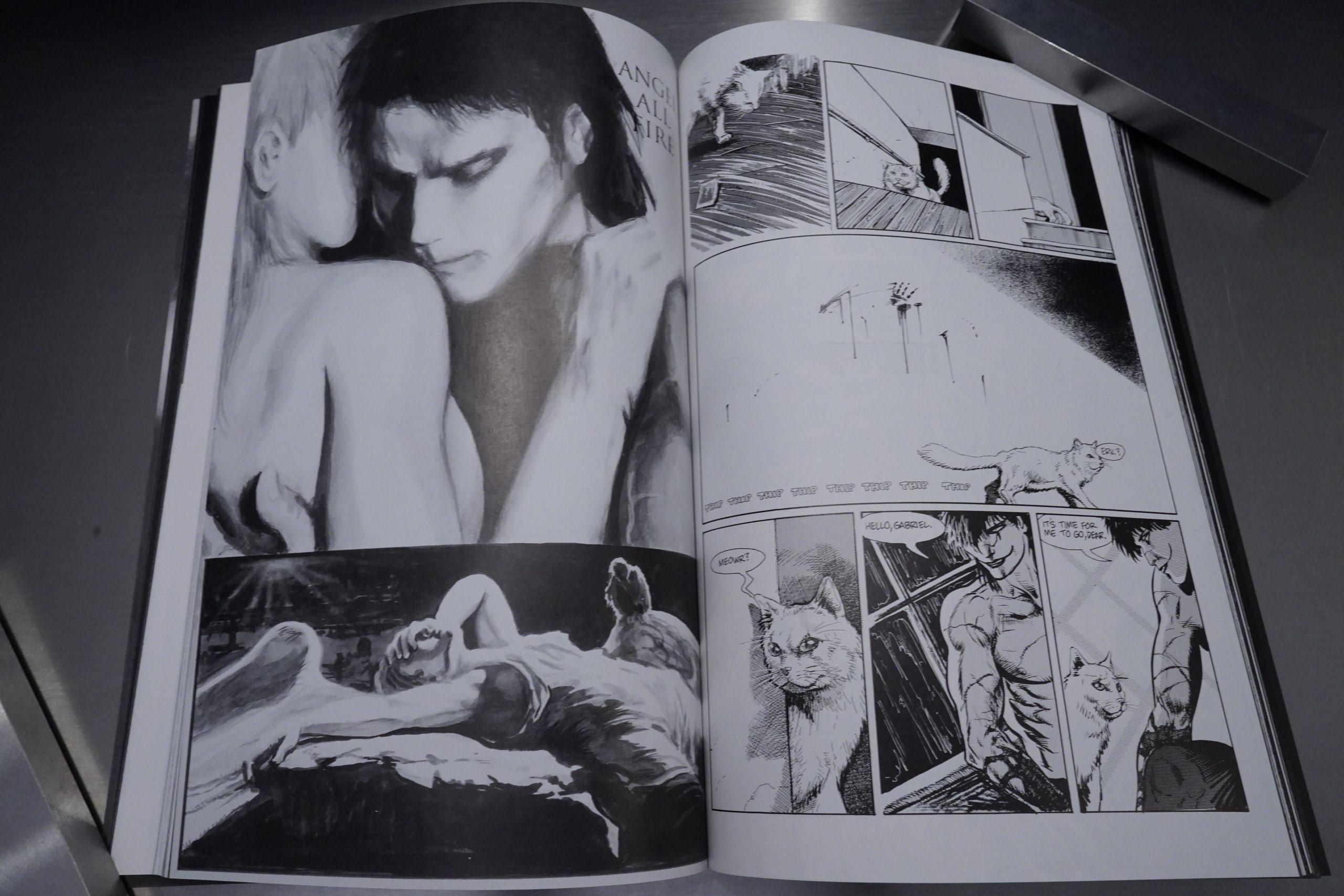
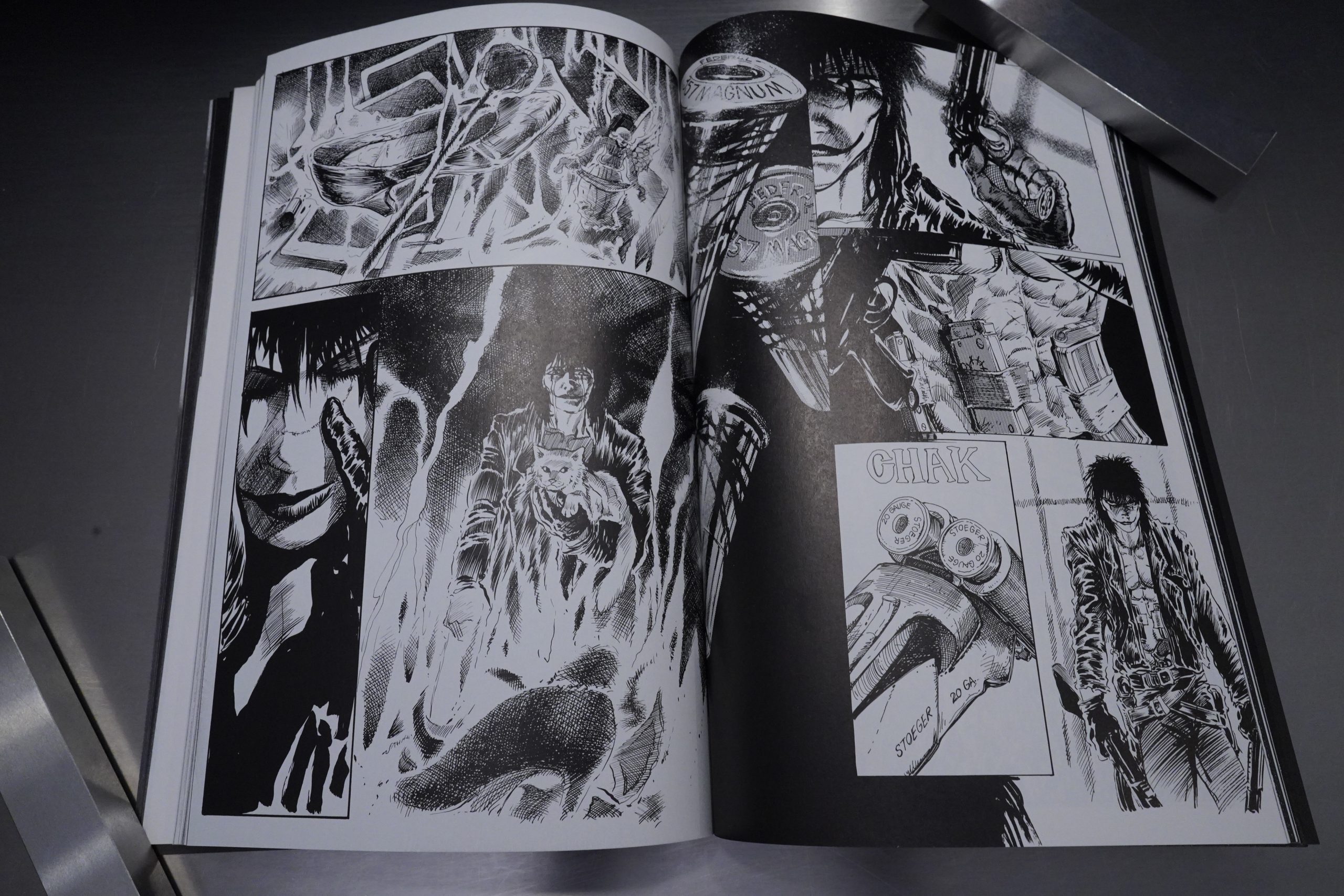
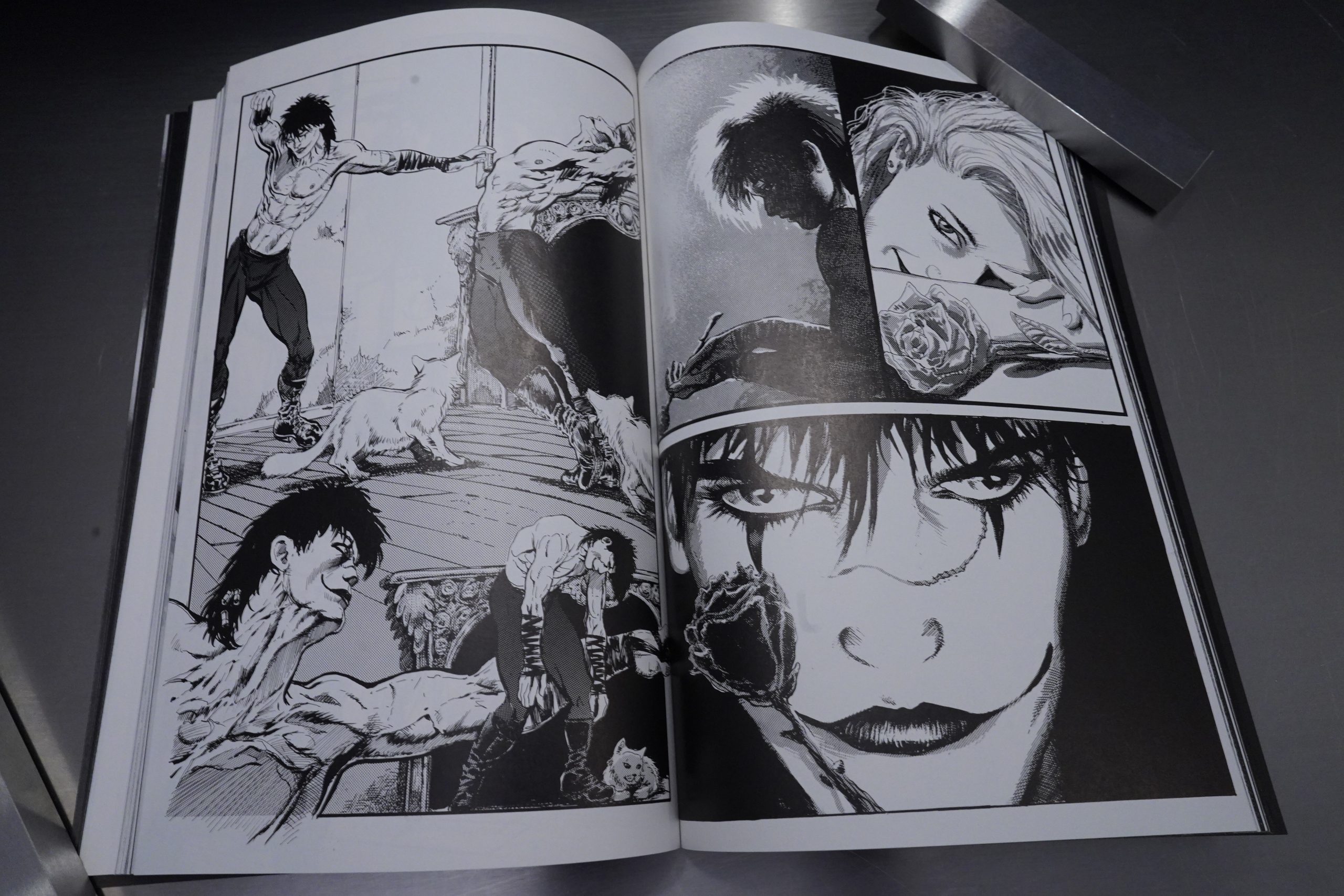

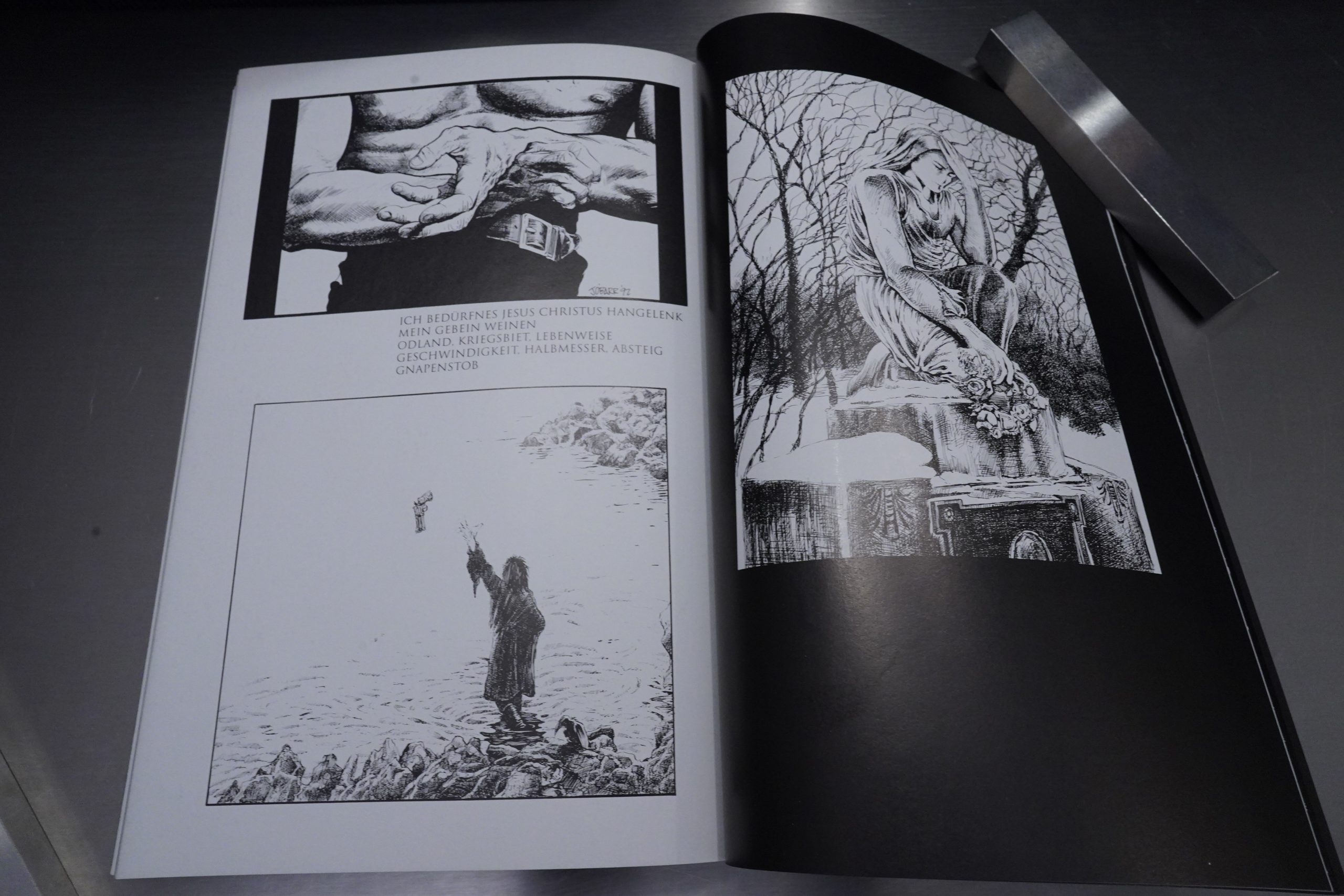
It’s “je ne said quoi,” not “jennesequa” or whatever you said.
Pingback: mashable.com